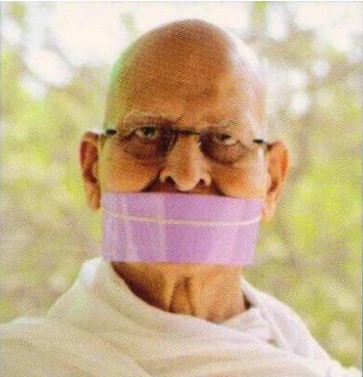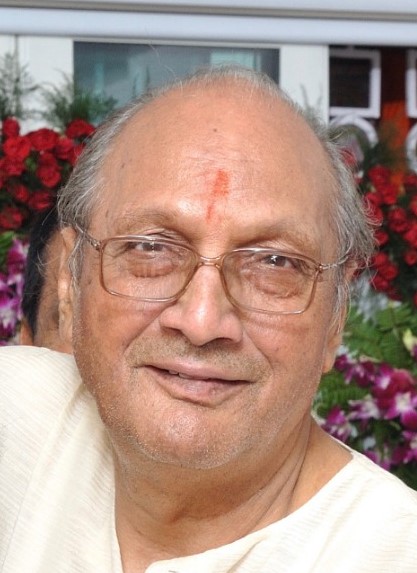Preparation for meditation
- Meditative Posture (Dhyanasan): Choose the posture m which one can sit comfortably and can remain steady for a long time, eg. Full Iotus-posture Padmasan, or Half Lotus posture Ardhapadmasan, or Simple Crossed-lcgged posture. Sukhasan or Dimond posture Vjrasan. Practise is essential to sit steady for a long time.
- Eye Position : Close your eyes softly without giving a pressure.
- Veetrag Mudra : Place both the hands below naval Left hand should be below and the right hand on the top.
or
Gyan Mudra : Place both hands on knees. Join the tip of the thumb and index finger lightly and keep the other three fingers straight.
- Mahaprana Dhvani Inhale completely. Slowly while breathing out, produce the sound m....m....m.. sounding through the nostrils like bulling of a bee. (9 times)
- Recite three times Aphorism :"sampikhhae appagarnppainam.
Perceive the soul through the soul. Perceive the self through the self Practice Preksha Meditation to perceive the self.
- Resolve for Meditation : "I am practicing Preksha Meditation for the purification of my psyche" (Repeat three times)
First Step of Meditation
Kayotsarg: Total Relaxation with Self-Awareness
- Keep your body steady, relaxed and free from tension. Keep your spine and neck straight without stillness. Relax all the muscles of your body. Let your body become limp.
- Practise steadiness of body (kaygupti) for 5 minutes. Keep your body completely steady and motionless as a statue. Do not allow any limb of your body to move. No movement at all. Maintain total steadiness till 5 minutes.
- Concentrate your mind on each part of the body one by one from feet to head.
- Allow your mind to undertake a trip in the whole body.
- Use the technique of auto suggestion to relax the whole body and experience the resulting relaxation. Suggest each and every muscle and each and every nerve to be relaxed Attain the relaxation of the w hole body. Use deep concentration - remain completer) alert.
Second Step of Meditation
Internal Trip (Antaryatra)
- Concentrate your psyche at the center of energy (Skakti Kendra)
- Allow your psyche to move from center of enemy upward inside your spinal cord to the central top of the head which is called the center of knowledge (Gyan Kendra)
- Again allow it to come back through the same path to the center of energy
- Again and again repeat the same process Let your mind continuously undertake the trip inside the spinal cord (sushumna)
- Perceive the subtle vibrations of the vital energy
- Concentrate your total consciousness on spinal cord (sushumna) ( After one to two minute) Synchronize the speed of consciousness with the speed of breath. While breading out take the consciousness from down to upward direction and while breathing in take the consciousness from up to downward direction.
Third Step of Meditation
Perception of Deep Breathing
Make your breathing slow. Inhale deeply and exhale deeply.A breath should be rhythmic and equal. The time taken to breathe in for the first time should be the same for every breath.
Let the vibrations of your breath reach the navel. Abdominal muscles expand during inhalation and contract during exhalation. Concentrate your psyche on your naval and experience the expansion and contraction of abdominal muscles and experience the incoming and outgoing breath along with that .Remain alert during each inhalation and exhalation .
Practise the Perception of Long Breathing with deep concentration and total awareness Keep continuously practicing it.
( After Sometime) Shift your attention from the navel and focus it inside the nostrils at the junction of both the nostrils. Perceive each incoming and outgoing breath w bile continuously practicing slow, long and rhythmic breathing.
Continuously practise slow, long and rhythmic breathing. Inhale and exhale each breath while remaining fully aware of it. Fully occupy your mind in perception of breathing. Experience only your breath.
If you are distracted by any thought, do not try to stop it forcefully, but also perceive it and then again start perceiving your breath. If the distraction is frequent, you may hold your breath for a few seconds or allow your tongue to touch the pallet. Remain fully aware of your breath.
Fourth Step of Meditation
Perception of Bright White Color ( Jyothi Kendra Preksha)
- Concentrate your psyche on the center of enlightenment (Jyoti Kendra), situated in the middle of your fore head. Allow your mind to penetrate inside and perceive bright white colour there. Experience as if the full moon is rising, and the waves of its bright white light arc falling on the center of enlightenment (or lake support of any bright white thing like full moon). You may penetrate inside and perceive white colour inside at enlightenment center.
- Experience that the rays of bright white light are falling on the center of enlightenment.
- Experience through autosuggestion that all your passions and emotions arc being pacified (2 to 3 minutes).
- Now allow your psyche to spread throughout the whole portion of your forehead and perceive the bright white colour there. Visualise that the particles of bright white light arc permeating the whole portion of the forehead.
- Perceive that the total forehead is covered up by the waves of the white light. Experience complete mental peace and bliss.
The Aphorisms of Wisdom (Recite this if it is required)
Appana Sachchamesejja, metthn blutesu kappae ()
Search truth yourself and be friendly with all living beings.Aahaitsu vijja charanam paniokkham
Practise knowledge and conduct for emancipation from sufferings. - Conclude the meditation session with three long and deep breaths.
 Muni Kishan Lal
Muni Kishan Lal
 Subhkaran Surana
Subhkaran Surana
